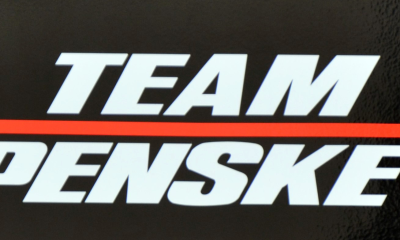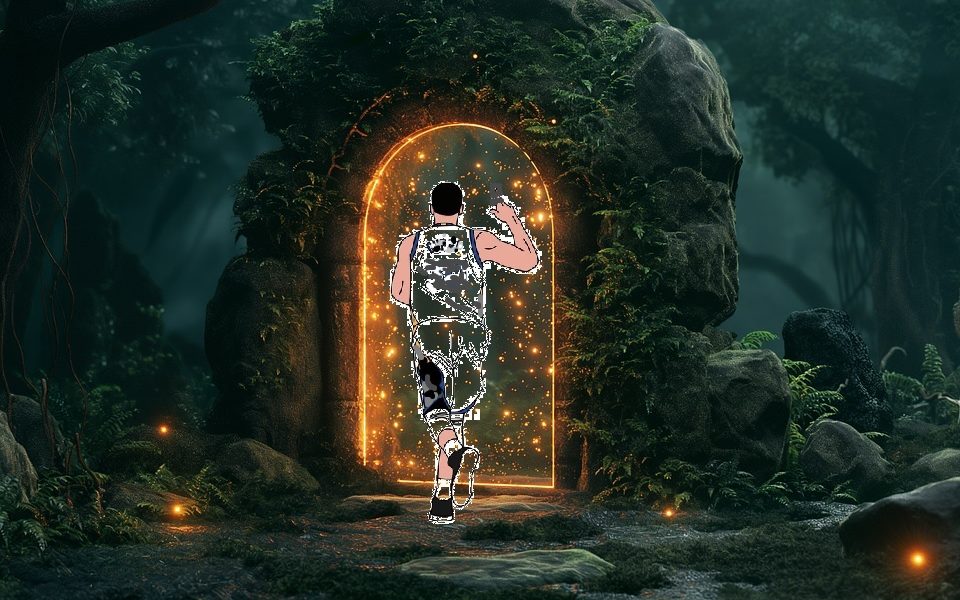Sports
With Lift Ticket Prices Exorbitantly High, the Ski Industry Needs to Rethink Its Priorities
Then, Reitzell explained that it’s his job to protect ski resorts, reiterating that costs have gone up for resorts due to rising costs of operation, as if this excuses the 546 percent appreciation of lift ticket prices in North America during the last four decades. “The cost of running a ski resort has gone up […]


 Then, Reitzell explained that it’s his job to protect ski resorts, reiterating that costs have gone up for resorts due to rising costs of operation, as if this excuses the 546 percent appreciation of lift ticket prices in North America during the last four decades. “The cost of running a ski resort has gone up as resorts spend to maintain terrain and create compelling benefits for employees,” Reitzell said. But has it gone up 546 percent? Let me paraphrase Reitzell: the ski industry is not coming to save us. And, at least in the near future, the ski industry is not going to become more affordable.
Then, Reitzell explained that it’s his job to protect ski resorts, reiterating that costs have gone up for resorts due to rising costs of operation, as if this excuses the 546 percent appreciation of lift ticket prices in North America during the last four decades. “The cost of running a ski resort has gone up as resorts spend to maintain terrain and create compelling benefits for employees,” Reitzell said. But has it gone up 546 percent? Let me paraphrase Reitzell: the ski industry is not coming to save us. And, at least in the near future, the ski industry is not going to become more affordable. To gain insight into the ski industry pricing out everyday consumers, I spoke to the head of the National Ski Areas Association, Mike Reitzell. Surprisingly, Reitzell more or less repeated what Donner Ski Ranch announced to its online audience, saying, “lift ticket and season pass pricing varies greatly by region and ski area size. Typically, the lowest-priced lift tickets can be found at small ski areas.” In other words, the NSAA excuses the high prices of larger ski resorts.
While Donner Ski Ranch and the many people in the comment section are justified in their opposition to large resorts, which come with exorbitant lift ticket prices that have only skyrocketed in recent years, I would argue that the issue stems from the ski industry itself as opposed to the individual consumer. While it’s true that skiing at smaller mountains is more affordable, skiers shouldn’t be forced to pay insane amounts of money to access challenging terrain in the first place. Specifically, weekend warriors, middle-class skiers, and families who live in neighboring cities should be able to ski Palisades Tahoe without breaking the bank. Is this a radical statement? Or just common sense?
Only per run. Photo: Jeffrey Brandjes
The real challenge here presents itself for the middle ground (and the vast majority) of skiers and riders frequenting resorts. The demographic who is most affected by the rising prices, and the ski industry’s inability to address them, are those who work full-time jobs, may not have enough money to invest in a brand-new backcountry skiing or riding setup, or may not have the time to go touring instead of riding the lifts.
I’ll add that the invention of the mega pass has changed skiing as we know it. Until mega passes came into the picture, skiers and riders picked their closest mountain, spent a couple hundred bucks on a season pass, and that was that. Now, skiers and riders must choose between spending a couple hundred bucks per day or spending a thousand dollars if they’re going to ski more than five days. I’m not bringing this up to criticize mega passes or the consumers who decide to purchase them (can you blame anyone?), but to illustrate how the ski industry has changed dramatically over the past few decades.
Corporations, besides being “lame-o” or whatever the Facebook commenter said, play a notable part in this conversation. Corporations tend to homogenize resorts, so skiing’s base lodges, chairs, and even maps begin to feel one in the same. Corporations are behind mega passes such as Epic and Ikon.
In fairness, one of the obvious opposition arguments – that I’ll address – is that consumers do have a choice to opt into resort skiing in the first place. Backcountry skiing is an option for those unwilling to pay large resort prices. Plus, backcountry skiing certainly has its advantages: it offers more freedom, more connection with nature, and more pristine powder.
All in all, the real issue here is the ski industry’s unwillingness to address its high prices. With lift tickets for big-name resorts in the hundreds (up to 0 on peak days), paid parking systems, resort dining options, and equipment rentals, a single weekend of skiing can quickly add up to thousands of dollars for individuals and families who don’t live in a mountain town or own their own gear. In other words: anyone who’s not rich or willing to make their entire life revolve around skiing is barred from enjoying the mountains.
So, what’s next? It seems unlikely that prices will decrease in the next few years without some kind of mass consumer strike or protest. So, what are skiers and riders to do? It’s a tough question, and it depends on who’s asking. Beginners and families looking for the skiing experience but are willing to sacrifice challenging terrain (because you don’t need couloirs and cliffs to learn how to link turns) can go to smaller, independently operated resorts. Individuals who are extremely invested in skiing and want to challenge themselves may opt to go off-piste, take avalanche safety courses, and build their network of fellow backcountry skiers and riders.
The family-owned, Lake Tahoe-area resort Donner Ski Ranch recently threw shade at Palisades Tahoe with a Facebook photo of its nonexistent lift line on a “busy day at 11:30 a.m.,” writing that “if you are paying 0 for a lift ticket, plus parking, to be stuck in terrible traffic then stand in long lift lines, you might want to rethink your priorities.”
Mega passes have their advantages: skiing across the country is possible for those who have the time and already own the pass. Instead of spending 0 to purchase your home resort’s season pass, you can spend a little more and gain access to a slew of other mountains. But again, for everyday, middle-class consumers, is this really useful, or is this simply a ploy to push people to buy the more expensive option that they’ll never reap the full benefits of? With blackout dates on the base passes, there becomes even more pressure to spend more and more money until it’s no longer any sort of “steal.”
Facebook users commented in agreement, saying things like, “Love the small resorts. Forget the corporations,” “Don’t forget to support a local mountain and not a lame Corpo mountain,” and “there are never lift lines there, I love that.” For comparison, Palisades Tahoe currently charges between 8 and 9 for a single-day lift ticket, with prices varying depending on the day of the week. (The weekend is more, and weekdays are less.) And that’s pretty much become the standard at large resorts across the country.
However, backcountry skiing shouldn’t be treated as a viable option for everyone. Avalanche safety courses and equipment are a must (and they come with a high price tag). Plus, it’s unsafe to backcountry ski alone and in certain conditions. Backcountry skiing requires a lot more investment, time, and expertise than resort skiing, making it potentially more expensive and even more difficult for everyday consumers to break into.
It is clear change is needed in the ski industry. I’m not opposed to mega-passes, and I’m not opposed to big-name resorts. But at the end of the day, it may be corporations driving the ski industry, and not skiers and riders, who need to rethink their priorities. When skiing risks pricing out many of its consumers by implementing prices and systems that simply aren’t conducive to the everyday rider, the industry can, and will, face the consequences. And if resorts continue to alienate those customers, the sense of community so cherished in snowsports will be dead – not to mention, there won’t be any skiers left to purchase the 0 day passes.
Sports
Mazda celebrates Singapore’s aquatic stars in grit-fuelled film
Mazda is putting the spotlight on grit and perseverance with its latest brand film “What drives you?”, launched in tandem with Singapore’s hosting of the World Aquatics Championships 2025. Done in collaboration with advertising agency 3-Sixty Brand Communications, the 60-second film opens with a voiceover asking, “What drives you to step out of your comfort zone?” […]

Mazda is putting the spotlight on grit and perseverance with its latest brand film “What drives you?”, launched in tandem with Singapore’s hosting of the World Aquatics Championships 2025.
Done in collaboration with advertising agency 3-Sixty Brand Communications, the 60-second film opens with a voiceover asking, “What drives you to step out of your comfort zone?” before showcasing five TeamSG aquatic athletes excelling in swimming, water polo, artistic swimming, and open water swimming.
As the official automobile partner of the championships, Mazda is powering the event with over 100 vehicles, shuttling athletes, officials, and organisers across venues. The partnership aims to highlight Mazda’s shared values of teamwork, endurance, agility, and relentless pursuit, qualities celebrated both in sport and on the road.
Don’t miss: adidas highlights unsung heroes who inspire us to go the extra mile
Mazda is also making waves beyond mobility with limited-edition aquatic-themed merchandise available at select championship venues, deepening its connection with the aquatic community.

“Mazda is honored to support a world-class sporting event that embodies passion, discipline, and unity. As we celebrate SG60, we’re reminded of how far we’ve come and the journeys that lie ahead, on the road and in the pool,” said David Chung, general manager, marketing and customer relationship, Trans Eurokars Pte Ltd.
Speaking on the film, Cindy Tay, general manager of 3-Sixty Brand Communications, said, “This film is a tribute to all who rise before dawn, train through fatigue, and perform with grace under pressure. It’s not just a story about athletes, it’s a story about purpose. We’re proud to bring that to life for SG60, Mazda and the world stage.”
Mazda joins a growing list of brands celebrating Singapore’s athletes. Earlier this year, the Ministry of Culture, Community and Youth (MCCY) partnered with Dentsu Creative Singapore on “Every support counts”, a digital campaign spotlighting the network of support behind Team Singapore.
Anchored by a hero film featuring three national athletes, the campaign highlighted the role of sports science, emotional resilience, and community backing in driving athletic success. Complementary videos also profiled athletes across disciplines, including para sports, underscoring the dedication and infrastructure behind every medal-winning moment.
Meanwhile, UNIQLO had thrown its support behind Singapore’s para athletes as the official clothing partner for the Paris 2024 Paralympic Games. The brand outfitted the Team Singapore delegation, including athletes and officials, with LifeWear apparel designed for comfort, function, and a sleek aesthetic that blends Singaporean identity with the Parisian cityscape.
Related articles:
PUMA celebrates runner’s high in new ‘Go wild’ brand positioning
Nike reminds the world there’s nothing wrong with wanting to win
Team SG partners graffiti artist to back local Olympians with Kampong Glam mural
Sports
Orange Line wins Sports Research digital brief, expands US footprint
Independent digital agency Orange Line has landed a significant new client in the US, securing a full-funnel digital strategy mandate with leading health and wellness brand Sports Research. Based in Los Angeles, Sports Research produces more than 300 premium SKUs across nutritional supplements and workout products. The brand was founded in 1980 and remains family-owned. […]

Independent digital agency Orange Line has landed a significant new client in the US, securing a full-funnel digital strategy mandate with leading health and wellness brand Sports Research.
Based in Los Angeles, Sports Research produces more than 300 premium SKUs across nutritional supplements and workout products. The brand was founded in 1980 and remains family-owned.
The partnership will see Orange Line lead strategy across SEO, CRO, paid media, email, SMS, data, analytics and web development, with a remit to accelerate e-commerce performance in the competitive US wellness market.
“Partnering with Orange Line has been an exceptional experience. They bring stellar organization in their ways of working, clear communication, and a truly enjoyable team dynamic,” Marshall Spellmeyer, UI/UX Designer at Sports Research, said. “Their innovative, forward-thinking strategies consistently adapt to evolving market and technology trends, keeping our brand ahead of the curve.
“Every interaction with Orange Line reflects a commitment to excellence and insight, making collaboration both effective and genuinely fun to partner with such a great team. I’m confident we’ll see rapid success partnering with Orange Line and value their team tremendously.”
David Klein, co-founder at Orange Line, said the win underscores the agency’s growing presence in North America.
“We’re really excited to work alongside Sports Research during this important phase of growth. With our team members based in both Sydney and LA, we’re able to offer seamless, real-time support across time zones,” he said. “Combined with our data-driven approach and strong commercial focus, we’re well-placed to help accelerate their growth and deliver long-term impact.”
The win builds on Orange Line’s expanding US client base and bolsters its positioning as a digitally focused, performance-led agency working across global markets.
Sports
Second day of men’s preliminary water polo matches
Preliminary Round Group Match Reports Match 9, Group C, UNITED STATES OF AMERICA 16 BRAZIL 7 (6-1, 2-0, 4-3, 4-3) Olympic bronze medallist USA was always going to hard to beat, but Brazil took it up to the more illustrious opponent in this American confrontation. With junior world championship most valuable player Ryder Dodd in […]
Preliminary Round Group Match Reports
Match 9, Group C, UNITED STATES OF AMERICA 16 BRAZIL 7 (6-1, 2-0, 4-3, 4-3)
Olympic bronze medallist USA was always going to hard to beat, but Brazil took it up to the more illustrious opponent in this American confrontation. With junior world championship most valuable player Ryder Dodd in sparkling form — gaining player of the match today — USA was assured of an excellent start and this it did with the youngster scoring three of the first four goals before Lucas Farias responded for Brazil. Hannes Daube collected his second from the top left, followed by captain Max Irving from the other side of the pool. Dylan Woodhead snapped in a short cross pass to the right-post position on extra to start the second quarter and USA was 7-1 ahead. Brazil tightened its defence and restricted USA to only one other goal with Irving smashing in a shot from his favoured position on action at 4:22. Brazil made a few shots on target, one hitting the left upright, that had beaten the goalkeeper.
Brazil proved very competitive in the third period with three consecutive goals after USA had advanced the score to 11-1. Irving closed the scoring for a 12-4 margin. Irving scored twice while for Brazil, Farias claimed his second from the top. Brazilian captain Gustavo Guimaraes buried the second and third shots with the second needing VAR to get across the line. The final quarter was also relatively even with goals traded to 14-6 — Connor Ohl gaining his first goal at this level. USA had a penalty attempt saved and two timeouts for USA realised a penalty goal to Connor Ohl (with his brother playing alongside him and his parents in the stands). Farias landed a third from the top and Jake Ehrhardt converting extra from the deep left for 16-7 at 0:32. Brazil had a timeout and the subsequent shot rebounded off the bar and the last shot saved. It proved to be a 4-3 quarter and an 8-6 half.
Match Heroes
Ryder Dodd and Irving scored four each for USA and Farias three for Brazil. Joao Fernandes made 10 saves in the Brazilian goal.
Turning Point
At 11-1, there was no turning point, although Brazil’s second half was a compliment to its determination.
Stats Don’t Lie
USA rattled in seven of 10 on extra and defended three of four. USA missed one of the two penalty attempts on offer. USA made six steals to two and shot 34 to 26 overall.
Bottom Line
USA has that elusive Olympic bronze and Brazil needs a lot of work to become the best in the Americas.
What They Said
Progress Points
Group A: Serbia 3, Italy 3, Romania 0, South Africa 0.
Group B: Hungary 3, Spain 3, Japan 0, Australia 0.
Group C: United States of America 6, Brazil 3, Canada 0, Singapore 0.
Group D: Croatia 3, Montenegro 3, Greece, China 0.
Day 6 Schedule
Match 17. 09:00. Group C, Canada v Brazil
Match 18. 10:35. Group B, Australia v Japan
Match 19. 12:10. Group D, China v Montenegro
Match 20, 13:45, Group A, Italy v South Africa
Match 21. 16:00. Group A, Serbia v Romania
Match 22. 17:35. Group D, Greece v Croatia
Match 23. 19:10. Group C, Singapore v United States of America
Match 24. 20:45. Group B, Spain v Hungary
Enjoy this article? Why not share…
Sports
U.S. Girls U19 National Team Takes Silver at 2025 World Championship
COLORADO SPRINGS, Colo. (July 13, 2025) – The U.S. Girls U19 National Team earned the silver medal at the 2025 Girls U19 World Championship after falling in the final to Bulgaria, 3-1 (21-25, 25-16, 25-17, 29-27) on Sunday in Osijek, Croatia. The U.S. has medaled in the last four World Championships for the age group. […]

COLORADO SPRINGS, Colo. (July 13, 2025) – The U.S. Girls U19 National Team earned the silver medal at the 2025 Girls U19 World Championship after falling in the final to Bulgaria, 3-1 (21-25, 25-16, 25-17, 29-27) on Sunday in Osijek, Croatia.
The U.S. has medaled in the last four World Championships for the age group. The 2023 World Championship, where the team won gold, was the first one contested as a U19 championship. Previously, FIVB held Worlds as a U18 event, and the U.S. won bronze in 2021 and gold in 2019.
The match was close statistically as the U.S. finished with a one-point advantage in kills (46-45) and blocks (11-10), while Bulgaria served eight aces compared to five for the U.S. The key statistic was Bulgaria committing 14 fewer errors (37-23).
Outside hitter Suli Davis, who was named Best Outside Hitter, led the U.S. in points (17), kills (13), aces (3), digs (16) and successful receptions (4). Libero Lily Hayes finished with 14 digs.
Outside Cari Spears totaled 12 points on 10 kills and two blocks, while middle blocker Jordan Taylor shared match-high honors with four blocks to go with seven kills for 11 points. Henley Anderson was named Best Opposite and had seven points on five kills and two blocks in the final.
The U.S. led the entire first set, jumping out to a 6-1 lead. A Davis kill extended the lead to six, 10-4. Spears and Davis provided back-to-back kills to make it 14-7 and force Bulgaria to use its final timeout. Bulgaria used a late 7-2 run to cut the margin to three points, 23-20, but kills by Anderson and Davis sealed the opening set.
Davis led all players in the with six points on four kills, a block and an ace. Taylor scored five points on three kills and two blocks. The U.S. doubled Bulgaria’s kill total in the set, 14-7.
Bulgaria scored seven consecutive points to break a 7-7 tie and take early control of the second set. The U.S. got no closer than five points. Davis and Spears each scored three points on kills.
Bulgaria never trailed in the third set, using a 5-0 run to take a 7-2 lead. After the U.S. closed the gap to four points, 13-9, Bulgaria scored the next seven points. Davis scored three points.
The U.S. fell behind 7-4 in the fourth set before using a 5-2 run to even the score at nine apiece on Kelly Kinney kill off hands. A Davis ace and a Taylor block gave the U.S. a three-point lead 13-10 but Bulgaria went on a 10-1 run. The U.S. responded with its own 10-3 run to earn set point on a block by Taylor.
Each team had two set points before Bulgaria converted on its third set point with a block to capture the gold medal. Davis scored five points on three kills and two aces, middle blocker Abbey Emch made some big plays in big moments to finish with four points on three kills and a block, and Spears also contributed three kills and a block.
2025 U19 National Team Roster for World Championship
(Name, Pos., Birth Year, Height, Hometown, School, Region)
3 Jordan Taylor (MB, 6-5, 2007, Houston, Texas, University of Minnesota, Lone Star)
5 Lily Hayes (L, 5-9, 2007, Tampa, Fla., Berkeley Prep HS, Florida)
6 Suli Davis (OH, 6-1, 2007, Euless, Texas, Brigham Young University, North Texas)
8 Abbey Emch (MB, 6-3, 2007, New Waterford, Ohio, University of Pittsburgh, Ohio Valley)
10 Isabelle Hoppe (S, 5-8, 2008, Gibsonia, Pa., Pine Richland HS, Ohio Valley)
11 Kelly Kinney (OH/OPP, 6-2, 2007, West Palm Beach, Fla., The Kings Academy, Florida)
12 Genevieve Harris (S, 5-11, 2007, Raleigh, N.C, Cardinal Gibbons HS, Carolina)
13 Gabrielle Nichols (MB, 6-3, 2007, Winston Salem, N.C., Penn State University, Carolina)
16 Cari Spears (OH, 6-3, 2007, Dallas, Texas, University of Texas, North Texas)
17 Lameen Mambu (OH, 6-0, 2007, Chantilly, Va., Georgia Tech, Chesapeake)
19 Henley Anderson (OPP/OH, 6-3, 2007, Dripping Springs, Texas, Dripping Springs HS, Lone Star)
20 Devyn Wiest (OH, 6-3, 2007, Peoria, Ariz., University of Utah, Arizona)
Alternates
1 Izzy Mogridge (S, 5-11, 2007, Lutz, Fla., Berkeley Prep HS, Florida)
2 Charlotte Vinson (OPP, 6-2, 2007, Muncie, Ind., Yorktown HS, Hoosier)
4 Kalyssa Blackshear (MB/OPP, 6-4, 2007, Torrance, Calif., University of Louisville, Southern California)
7 Ayanna Watson (OH/OPP, 6-3, 2007, Henderson, Nev., Bishop Gorman HS, Southern California)
9 Natalie Wardlow (MB/OPP, 6-5, 2007, Lincoln, Neb., Lincoln Southeast HS, Great Plains)
15 Logan Bell (L, 5-11, 2007, Beech Grove, Ind., Roncalli HS, Hoosier)
18 Aniya Warren (L, 5-8, 2007, Lockport, Ill., Benet Academy, Great Lakes)
Coaches
Head Coach: Keegan Cook (Minnesota)
Assistant Coach: Alyssa D’Errico (Utah)
Assistant Coach: April Sanchez (New Mexico)
Performance Analyst: Jon Wong (Florida State)
ATC: Cherryl Bueno (Coast to Coast AthletiCare)
Team Lead: Courtney Smith (NTDP)
2025 FIVB Girls U19 World Championship Schedule
July 2: USA def. Spain, 3-1 (22-25, 25-16, 25-12, 25-23)
July 3: USA def. Peru, 3-0 (25-19, 25-18, 25-18)
July 4: Poland def. USA, 3-2 (25-23, 23-25, 25-17, 25-27, 16-14)
July 6: Bulgaria def. USA, 3-2 (25-15, 16-25, 27-25, 13-25, 15-5)
July 7: USA def. Türkiye, 3-1 (25-19, 20-25, 25-22, 25-23)
July 8: Round of 16: USA def. Germany, 3-2 (25-18, 26-28, 17-25, 25-15, 15-13)
July 11: Quarterfinals, USA def. Italy, 3-2 (31-29, 23-25, 20-25, 30-28, 15-8)
July 12: Semifinals, 12:15 p.m.: USA def. Poland, 3-0 (25-14, 25-18, 25-19)
July 13: Final: Bulgaria def. USA, 3-1 (21-25, 25-16, 25-17, 29-27)
Sports
Bodine Selected by Baltimore in First Round of MLB Draft
Story Links ATLANTA — Coastal Carolina University catcher Caden Bodine was selected by the Baltimore Orioles with the No. 30 overall pick in the first round of the 2025 Major League Baseball Draft. Bodine, one of the elite catches in college baseball, won the Johnny Bench and Buster Posey Awards, was an […]

ATLANTA — Coastal Carolina University catcher Caden Bodine was selected by the Baltimore Orioles with the No. 30 overall pick in the first round of the 2025 Major League Baseball Draft.
Bodine, one of the elite catches in college baseball, won the Johnny Bench and Buster Posey Awards, was an ABCA/Rawlings Gold Glove Award winner at catcher and was a four-time All-American, earning spots on teams from the College Baseball Foundation (First), D1Baseball (First), Perfect Game (second) and NCBWA (third).
His selection marks 29 straight seasons with a Chanticleer being selected in the MLB draft, dating back to 1997. Bodine is only the second first-round choice in school history, joining Eric Brown in 2022 to the Milwaukee Brewers (No. 27 overall).
Coastal Carolina had a nation-leading and school record 56 wins, a Sun Belt Conference Championship, Sun Belt Tournament Championship, Conway Regional Championship, Auburn Super Regional Championship and a 3-0 run in Omaha to the Men’s College World Series Championship Final. Over the last quarter of the season, Coastal posted a 26-game winning streak, the fourth-longest winning streak in DI in the last five years.
Bodine turned in an outstanding all-around campaign in 2025. The First-Team All-Sun Belt Conference selection started 67 games for the Chanticleers — 66 behind the dish, one at DH — guiding a pitching staff that ranked No. 2 nationally in both ERA and WHIP. Offensively, he hit .318 with a team-best .454 on-base percentage, drawing 47 walks and being hit by 17 pitches. He added 24 extra-base hits, drove in 42 runs and slugged .461, serving as a consistent presence atop the lineup.
Behind the plate, Bodine was a defensive anchor. He threw out 19 would-be base stealers on 44 attempts — tied CCU’s career record with 46 runners caught stealing — and finished with a .998 fielding percentage. His leadership helped elevate Coastal to the Sun Belt Conference Regular Season and Tournament Championship, where he was named the Most Outstanding Player and also earned a spot on the All-Tournament Team. He followed that up with All-Tournament honors in the NCAA Conway Regional as the Chants advanced to the Super Regionals and Men’s College World Series for the first time since 2016.
2026 SEASON TICKET DEPOSITS
Missed the action at Springs Brooks Stadium this season? Fans can make a $25 deposit to secure season tickets for the 2026 Coastal Carolina baseball season. Reserve your seats today online!
Sports
Stingers Defend Victory Against Italy
The Ord Minnett Aussie Stingers have continued their winning run at the 2025 World Aquatics Championships with a four goal victory over Italy. After matching up against them only days ago in the Tri Nations Test Match Series in Perth, the Stingers took some extra confidence in the game having claimed the earlier win on […]

The Ord Minnett Aussie Stingers have continued their winning run at the 2025 World Aquatics Championships with a four goal victory over Italy.
After matching up against them only days ago in the Tri Nations Test Match Series in Perth, the Stingers took some extra confidence in the game having claimed the earlier win on home soil.
Team captain and New South Wales Institute of Sport (NSWIS) scholarship holder Bronte Halligan led from the front, scoring the first goal of the game to set up an early lead for the Stingers. It was a lead they managed to hold on to from start to finish, with fellow NSWIS athlete Hayley Ballesty scoring the last goal of the game to close it out, 19-15.
With five goals of her own, Abby Andrews was named Player of the Match.
“We’ve matched up a lot with Italy this year, and we know they’ve got really great shooters as well as a strong centre forward,” Andrews said. “They got some great shots, but I think we stamped the pressure really early on in the game and we were able to consistently build off that momentum.
“They came back a little bit but I think we held them out well in the end – we had great assists, great passing and some good execution,” she said.
The team includes multiple NSWIS scholarship holders such as Hayley Ballesty, Sienna Green, Bronte Halligan, Sienna Hearn, Dani Jackovich, Tilly Kearns, Alexie Lambert, Gen Longman, and Olivia Mitchell, as well as NSWIS staff – Senior Sports Physiotherapist Bernie Petzel and Sport Performance Analyst Joshua Dipple.
The Ord Minnett Aussie Stingers will now play trans tasman rivals New Zealand in their final pool match on Tuesday 15 July at 7:35pm AEST. Watch LIVE and FREE on 9Now.
Water Polo Australia
-

 Technology2 weeks ago
Technology2 weeks agoPet fitness and wellness trends for a healthier and happier dog
-

 College Sports2 weeks ago
College Sports2 weeks agoWAC to Rebrand to UAC, Add Five New Members in 2026
-

 Motorsports2 weeks ago
Motorsports2 weeks agoWhy Cosmetics are Making Up for Lost Time in Women’s Sports
-

 College Sports2 weeks ago
College Sports2 weeks agoA new era of Dickinson hockey begins behind the bench – The Dickinson Press
-

 Health3 weeks ago
Health3 weeks agoFlorida assault survivor shares hope for change with new mental health law
-

 Motorsports2 weeks ago
Motorsports2 weeks agoNASCAR This Week – Patriot Publishing LLC
-

 Motorsports1 week ago
Motorsports1 week agoTeam Penske names new leadership
-

 Sports3 weeks ago
Sports3 weeks agoHow to Market FAST Sports Content to New Audiences
-

 Youtube3 weeks ago
Youtube3 weeks agoFunniest MLB rain delay moments
-

 Youtube2 weeks ago
Youtube2 weeks agoBREAKING: NBA MVP Shai Gilgeous-Alexander signs the RICHEST annual salary in league history
































 | 2025 Wimbledon
| 2025 Wimbledon


























